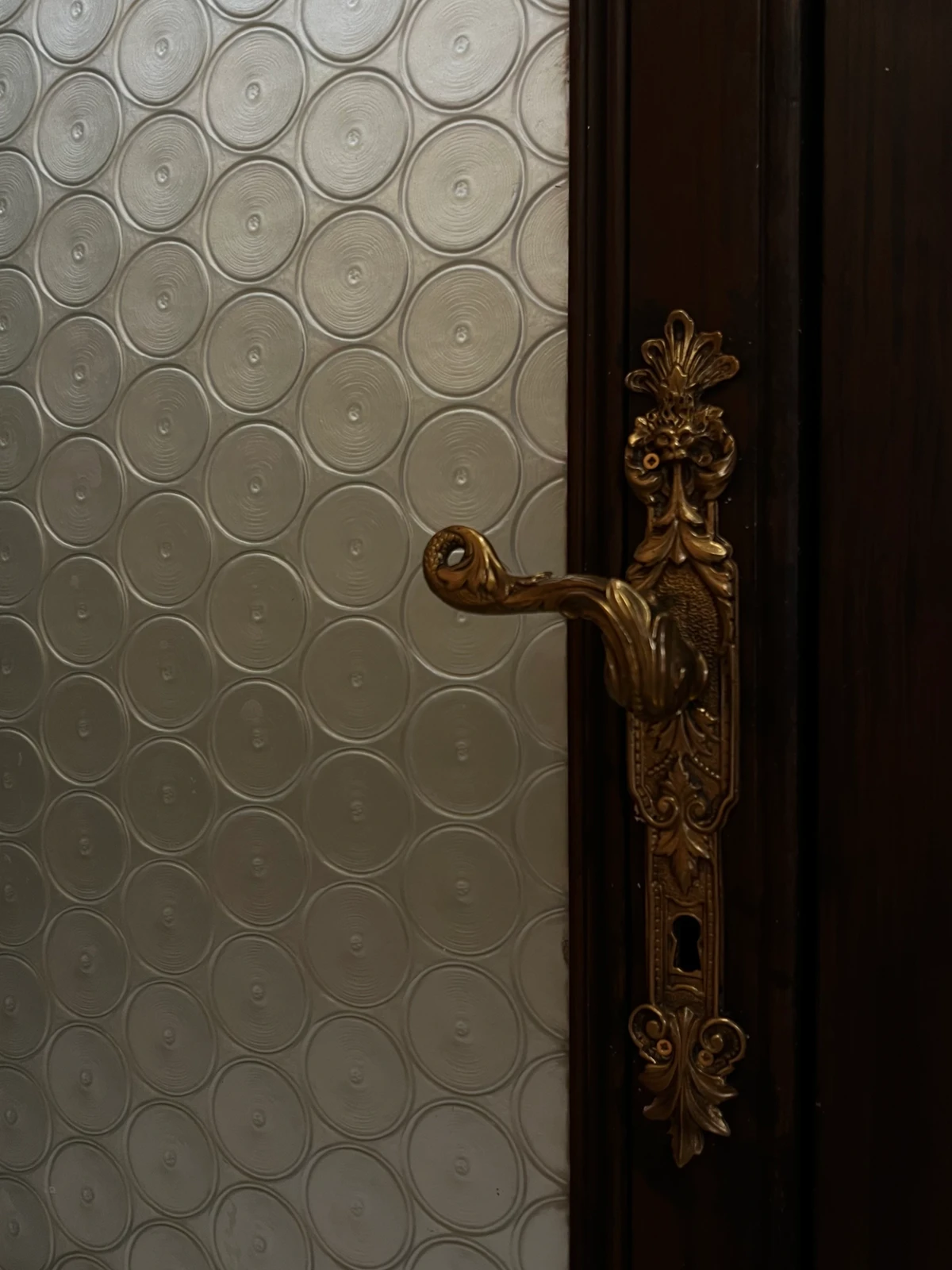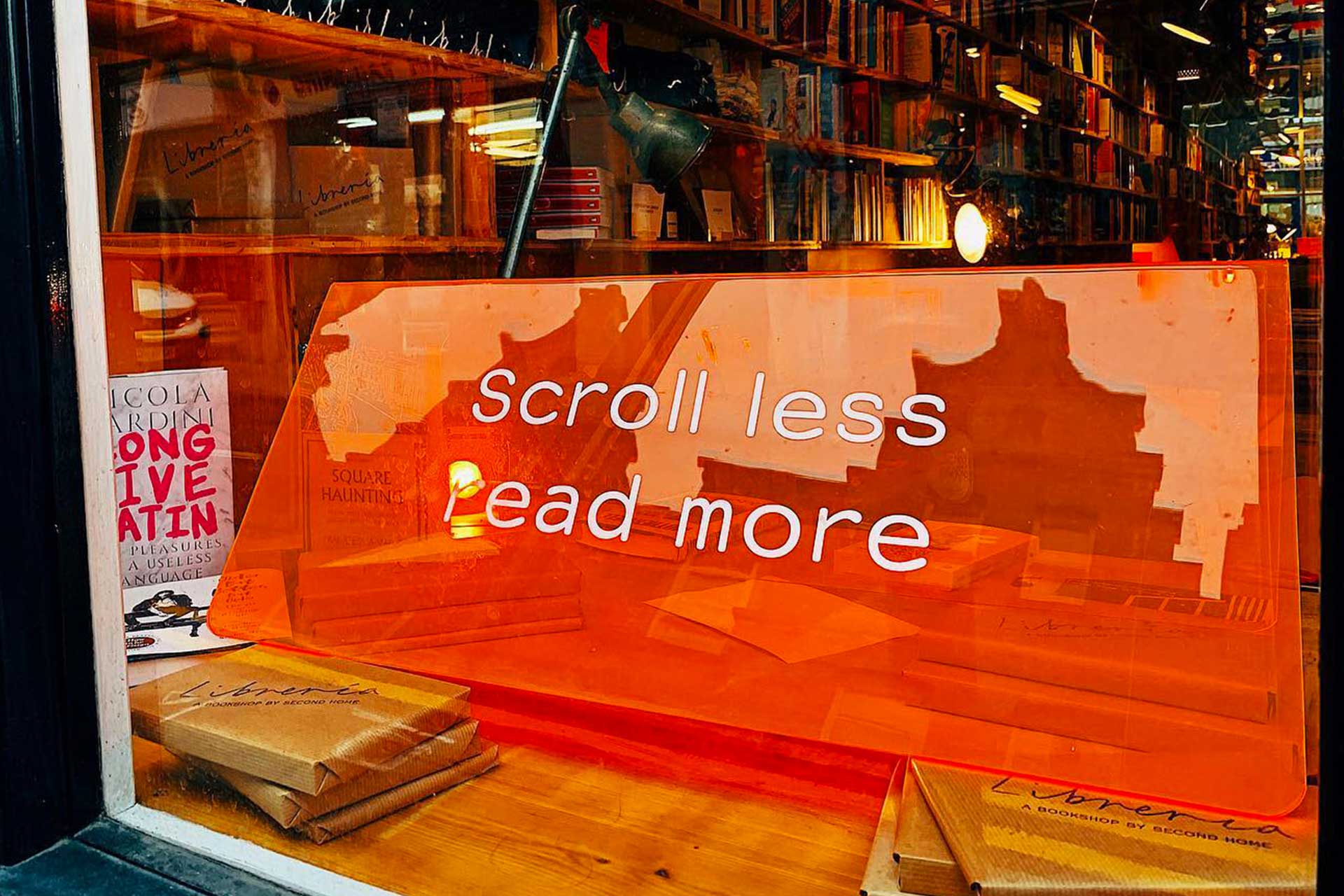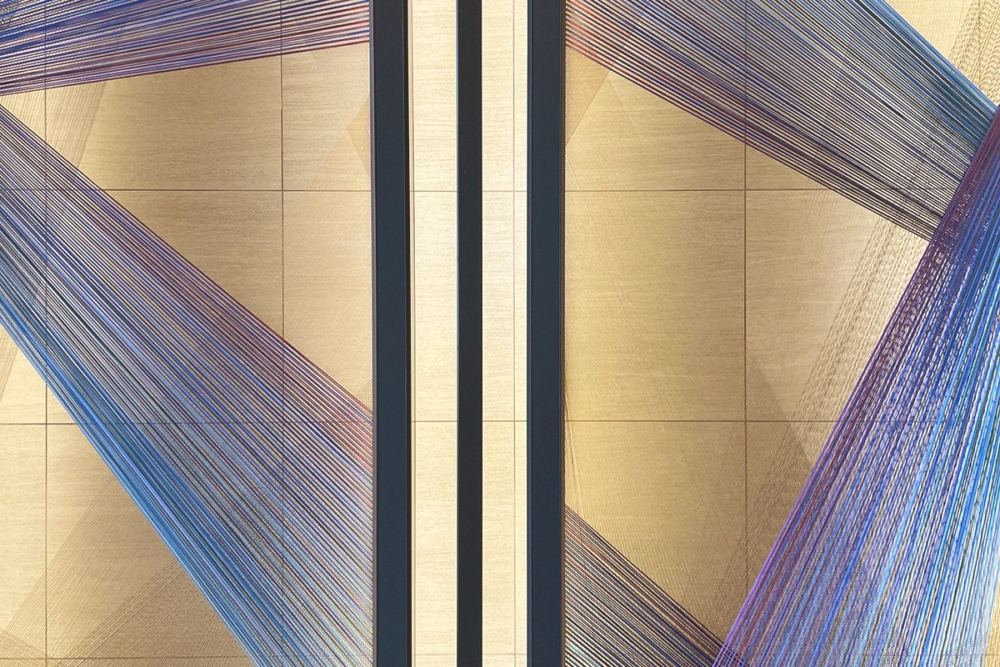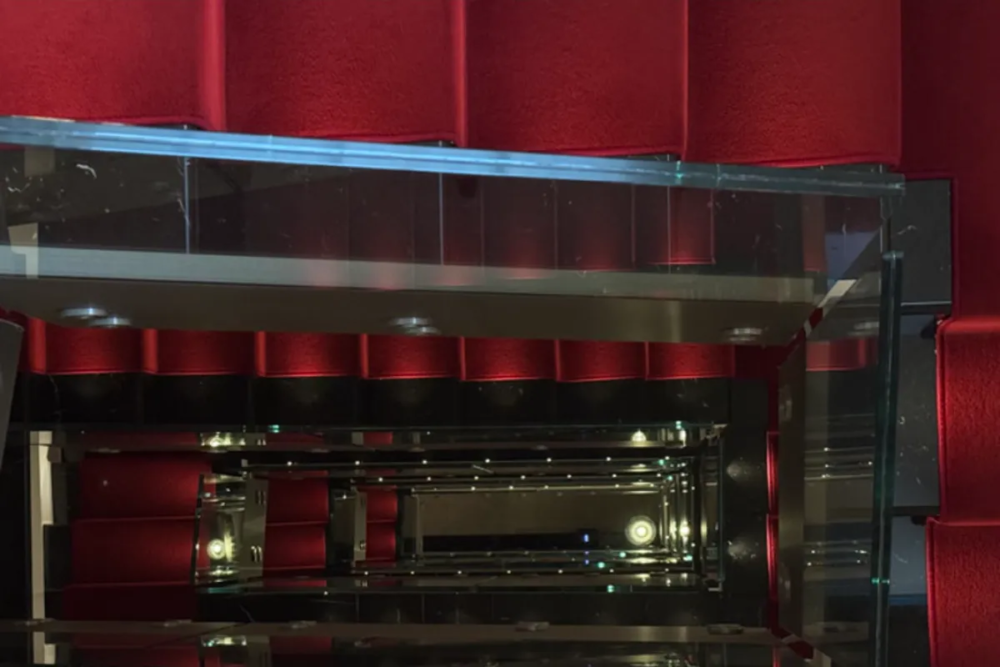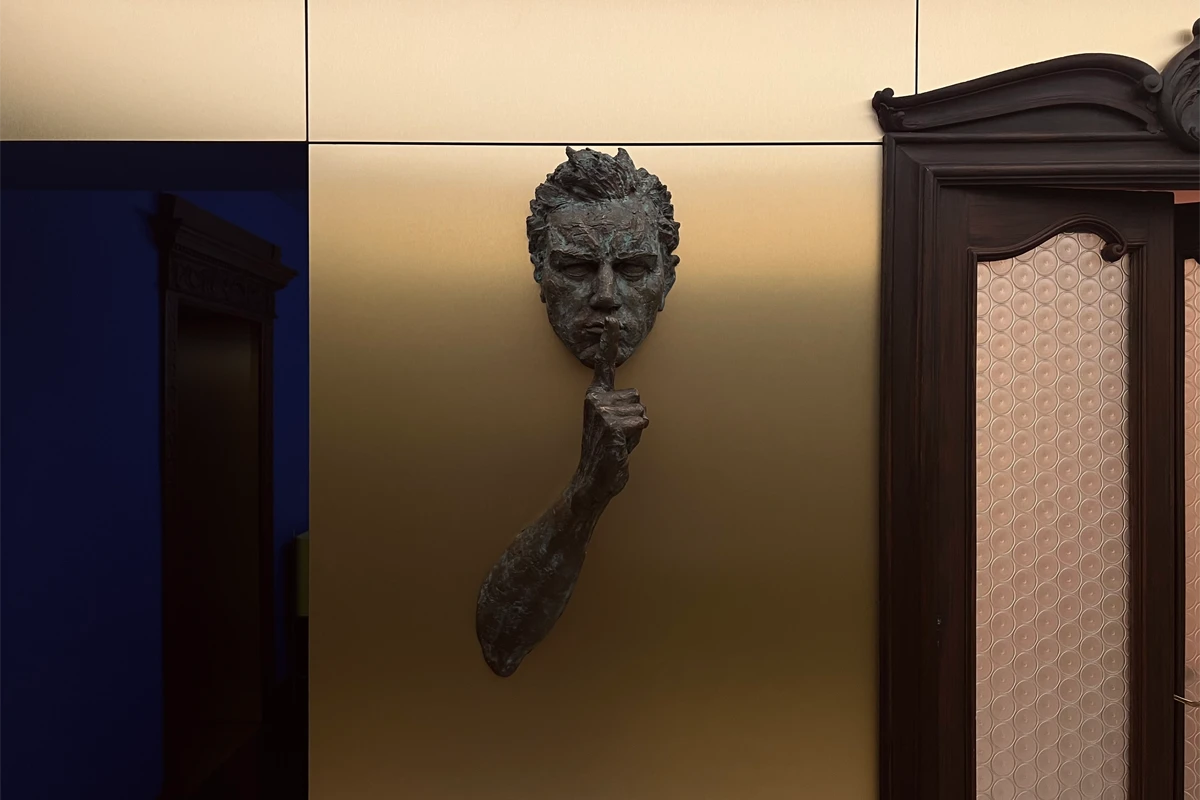
Contraste: Matias Perdomo Creates a Theatrical Dining Narrative
When cooking is an inventive laboratory, the dining room at Contraste becomes a theatrical set—somewhere between Uruguay and Italy, within interiors reimagined by Debonademeo Studio
A gastronomic theatrical pièce in Milan
Dinner at Contraste, Milan, is a gastronomic pièce where haute cuisine reveals its collective nature: a convivial rite blending passion, talent, cultural exchange, and constant wonder. Much like in the grand theaters of the Siglo de Oro or in Italy’s lively squares filled with Commedia dell’Arte performances. Unlike many Michelin-starred restaurants that rely on an almost intimidating austerity, Contraste embraces a playful dialogue with guests. In this narrative, neither the form of the cuisine nor the look of each dish is predictable. Every element is designed to disorient, amuse, and invite reflection on the boundary between reality and imagination. Matias Perdomo, the Uruguayan chef whose extensive experience in Milan underpins his culinary vision, draws equally from South American history and Italian traditions, keeping Contraste consistently one step ahead of more conventional fine dining approaches.
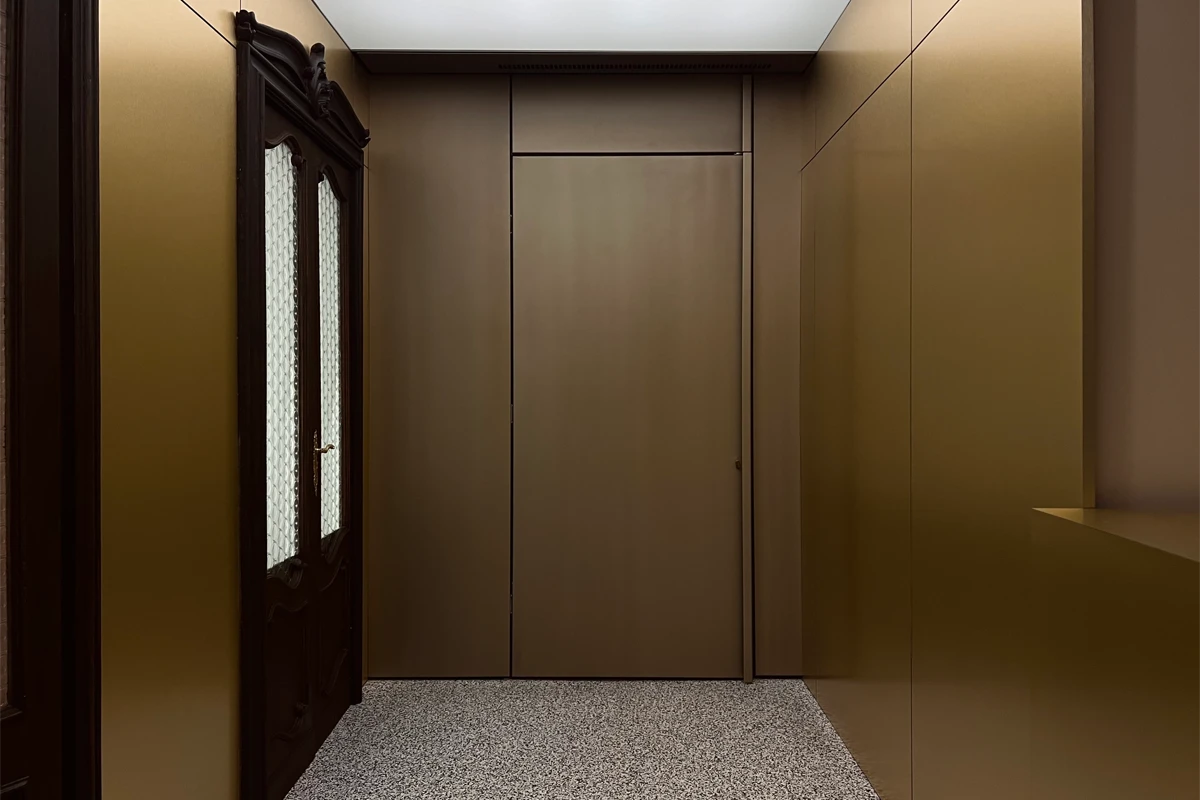
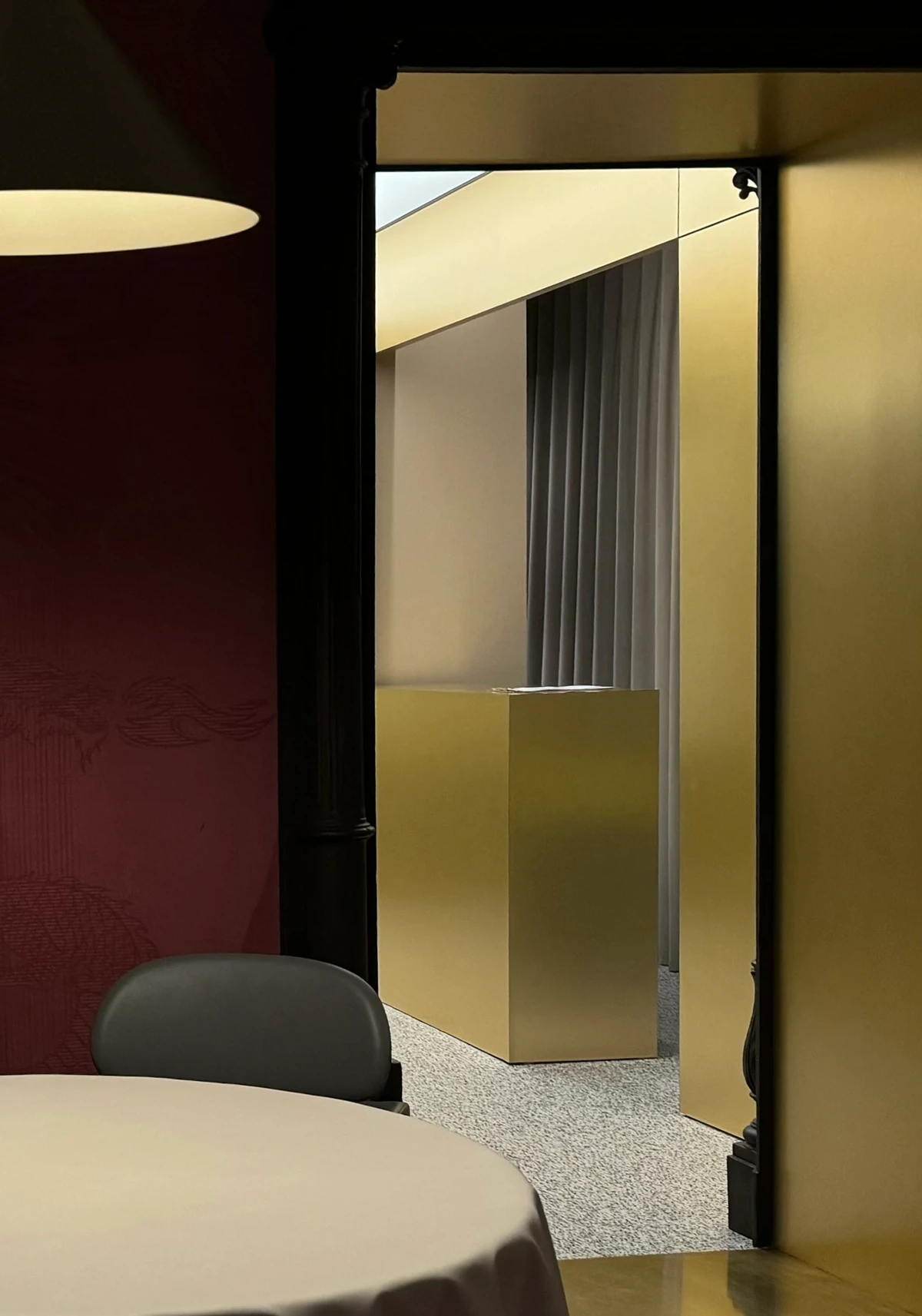
Matias Perdomo’s journey and the origins of Contraste
To fully grasp the spirit of Contraste, one must revisit the history of its founder, Matias Perdomo. Born in Uruguay, he grew up amid the joyful atmosphere of big asados, local markets, and the popular gastronomy of South America, where Spanish and Italian influences mingle in everyday dishes. His curiosity and desire to explore led him to move to Italy at a very young age. Milan, with its creative vibrancy and renowned culinary standing, became his “permanent lab” for honing his skills.
Following several experiences in prominent Milanese restaurants, Perdomo landed at Pont de Ferr, one of the most notable spots on the Navigli canals, where he helped earn a Michelin star. But this achievement did not satisfy his drive for experimentation. Instead, he set out to create something entirely new—capable of challenging assumptions and bridging haute cuisine with artistic performance—and that venture became Contraste. He was joined by Argentinian Simon Press and Italian Thomas Piras, forming a trio united by a deep passion for food and hospitality. Their collaboration showcases an intercultural dialogue that celebrates the richness of three distinct traditions.
Contraste opened in 2015 at Via Meda 2, in the southern part of Milan, and quickly emerged as one of the most innovative and surprising destinations on the gourmet scene. In 2017, merely two years after opening, the restaurant was awarded its first Michelin star, recognized for its creative, daring approach that constantly balances illusion with technical mastery. True to its name, Contraste has always embodied a ceaseless pursuit of unusual pairings. Guests soon discover that this is not a mere slogan: every dish and every detail are crafted to spark a dialogue between what appears to be and what truly is.

The theatrical inspiration: from the Siglo de Oro to the Commedia dell’Arte
Contraste’s culinary stage is inspired by theatrical traditions deeply rooted in both South American and Italian culture. In South America, Spanish influence shines through in popular storytelling, street entertainment, and lavish banquets where food becomes a pretext for convivial celebration. Meanwhile in Europe, fairs, festivals, and Italy’s bustling piazzas have for centuries hosted Commedia dell’Arte, replete with masks, slapstick humor, and the desire to captivate and involve the public. During the Spanish Siglo de Oro, theater and cooking sometimes lived in symbiosis, with grand baroque courts staging extravagant feasts designed to dazzle guests with astonishing scenic effects.
Contraste revives this spirit: it is not a “stiff” restaurant shrouded in silence and untouchable reverence. Instead, it encourages guests to embrace the performative essence of food. Perdomo’s dishes resemble costumes donned by actors preparing for a plot twist, while servers move across the dining room as though on stage, presenting each course with a playful theatricality. The lighting, carefully calibrated for each table, recalls the spotlights of a drama theater, focusing squarely on the evening’s protagonists.

Contraste: a restyling by Debonademeo Studio
Between 2023 and 2024, Contraste underwent a restyling project by Debonademeo Studio, reinforcing the restaurant’s theatrical character by transforming the interiors into a sequence of interconnected yet potentially independent spaces. The historic building on Via Meda dates back to the early 19th century. In the early 20th century, it was owned by Ercole Tavella, a Milanese doctor who embellished the interiors with stuccoes, frescoes, imposing doors, and a large wooden fireplace. These historical elements have been restored and incorporated into a contemporary aesthetic vision.
At the entrance stands “The Secret,” a sculpture by Matteo Pugliese that seems to emerge from a champagne-toned wall. It’s a bold invitation to step through the door with an open mind and a sense of discovery. Past the threshold, the space unfolds around velvet drapes that act like stage curtains, able to open and close as needed. The layout—reimagined by Debonademeo Studio as a series of traditional enfilade rooms—allows capacity to be adjusted to various needs, providing intimacy for small groups or accommodating bigger events in a single large room.
The choice to give each room a dominant color—associated with one of the four elements Air, Water, Earth, and Fire—is as much decorative as it is conceptual. The wallpapers, designed by Debonademeo Studio for Wall&Decò, evoke symbolic or even dreamlike scenes, evoking landscapes and surreal details. Their goal is to spark the diner’s curiosity, prompting them to interpret and decipher the imagery as if it were a puzzle. Alongside the velvet curtains, sound-absorbing materials—such as Tarkett vinyl flooring with terrazzo-style stripes—and carefully designed lighting create an interplay of soft glows and focused spots, turning the dining room into a bona fide theatrical set where nothing is left to chance.
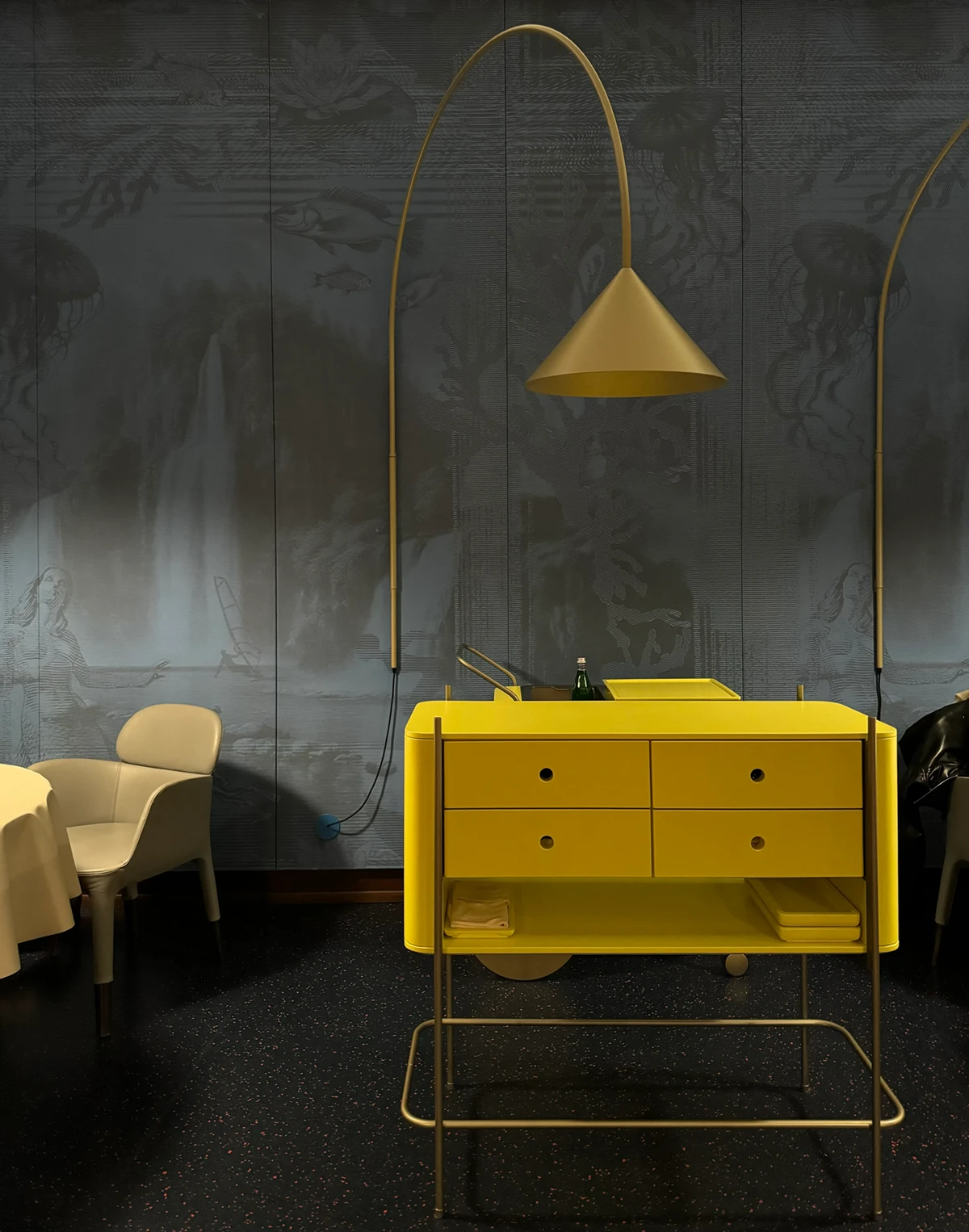
The organization of space and design underscores Contraste’s identity as a place where the food truly “takes the stage.”
The team, dressed with contemporary elegance, emerges from behind velvet “curtains,” pushing neon-yellow trolleys with oversized wheels—an ironic splash of color that breaks the room’s balance and adds an element of surprise. Each table has its own “island of light,” thanks to arc lamps with a champagne finish, designed in collaboration with Karman. This setup maintains a hushed atmosphere in the dining room, allowing diners to focus on the dishes, aromas, and conversation.
The “Relax” lounge, where Klein blue sets the tone, is a cozy nook for an aperitif or digestif, surrounded by fluorescent orange bar tables and comfortable seating—an informal extension of the dining experience, as if revealing the “backstage” of a grand theater. Even the restrooms embrace the restaurant’s cohesive aesthetic: metallic champagne wall paneling, vinyl coverings, globe-diffuser lights, and a pink Portuguese marble sink carry the guest seamlessly through the narrative. It is a clear message that Contraste’s experience isn’t confined to the dining area; it extends to every detail, even spaces typically considered secondary.

Matias Perdomo blends the techniques of high Italian cuisine, learned and refined during his time in Milan, with the South American influences
Contraste’s uniqueness does not lie solely in its décor but also in the culinary vision of Matias Perdomo and his team: an ongoing interplay of illusion and reality. A recurring motif is the reversal of expectations: a dish that appears to be a dessert might conceal marine flavors, while an amuse-bouche that looks savory might reveal sweet and spicy undertones. These “tricks” are not merely theatrical gimmicks; they encourage diners to rethink everything they know about food and the senses. Often, taste is intertwined with suggestion: if we see a familiar shape, we instinctively anticipate a certain flavor—only to discover at first bite that we’ve been delightfully misled.
Perdomo blends the techniques of high Italian cuisine, learned and refined during his time in Milan, with the South American influences he carries in his personal background. Many recipes echo the region’s spices, barbecue traditions, and citrusy notes typical of the Rio de la Plata. Yet each dish is developed in what might be called a “glocal” style, driven by innovation and research rather than adhering to rigid rules. Great emphasis is placed on ingredients: Contraste collaborates with trustworthy suppliers and small-scale producers of exceptional quality. Whenever exotic products are used, the team ensures they come from ethical, sustainable sources. Within the restaurant, the golden rule is that creativity should always be matched by substance, without slipping into pointless showmanship.
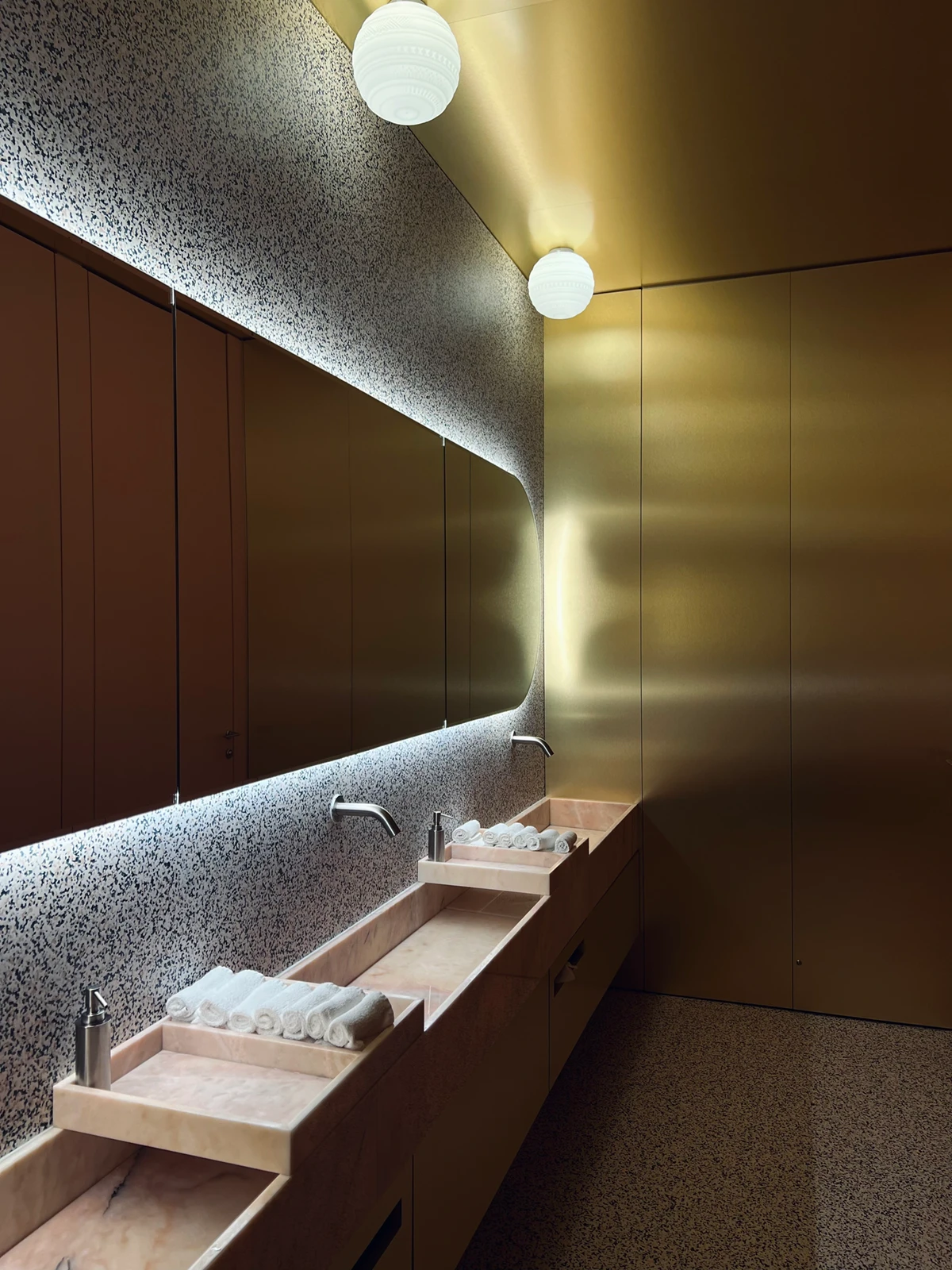
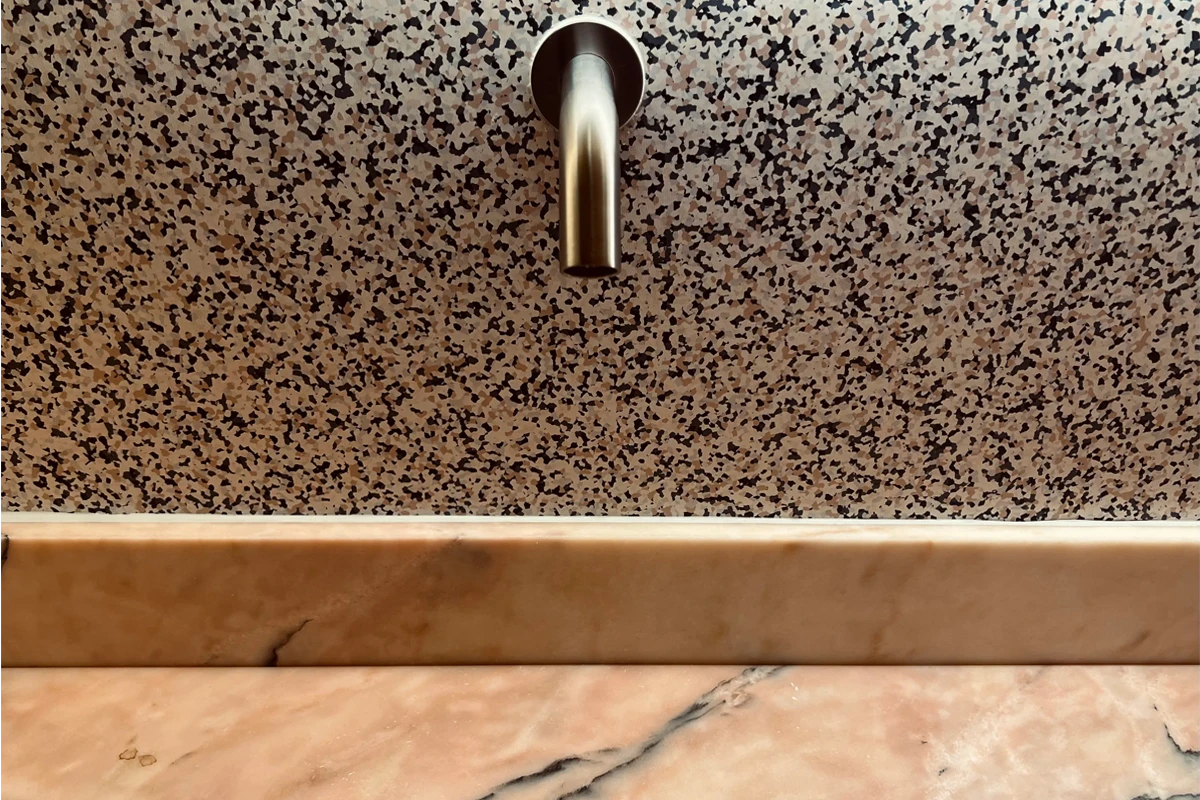
The comedy of taste: dining as a collective act
Coordinated by Marian Tamas, service in the dining room brings the “comedy of taste” to life: a performance where staff become actors, presenting dishes as if they were scenes from a script. There is no overbearing formality, although the care for detail is typical of fine dining. Servers describe ingredients, share anecdotes, pique guests’ curiosity with questions, and invite them to guess hidden elements. In this way, the diner becomes more than a mere spectator, taking an active part in a gastronomic journey that reveals itself course by course.
A particularly memorable moment is the “prendessert,” served in a box that can only be opened using a key—a semi-serious ritual reminiscent of a quest for the Holy Grail, but in the realm of flavors. The guest is invited to “meet the challenge,” unlock the box, discover what’s inside, and then move on to the actual dessert. It’s a treasure hunt for the taste buds, an artful build-up of suspense blending the sacred and the profane—an apt reflection of a culinary philosophy that never takes itself too seriously, despite its extremely high technical standards.

Contraste – the wine selection
The sommelier, working in close collaboration with the kitchen, suggests pairings that range from renowned Italian or French reds—well-suited to dishes with richer, “earthy” flavors—to lesser-known whites, unusual sparkling wines, or biodynamic labels that offer surprising complements to the food. In a space where contrast is the norm, there is no reason to hesitate pairing a structured white with a meat course or a light red with fish if it enhances the overall harmony of flavors.
The guiding principle behind these pairings is emotion rather than convention. The goal is to spark an interplay of sensations that heighten the overall experience and enrich the conversation between the food’s flavors and the wine’s character. Here again, Contraste serves as a stage for exploration, challenging the long-held Italian dictum “red with meat and white with fish” so long as the results are balanced and surprising.
Media buzz and international recognition for Contraste
The Michelin star awarded in 2017 confirmed the restaurant’s vision and propelled Contraste into the international spotlight, attracting a clientele seeking not just a meal but a veritable artistic experience. Numerous food publications—including Gambero Rosso, Identità Golose, Fine Dining Lovers, and international gourmet and design outlets—have published features and reports highlighting Contraste’s multi-level narrative: culinary, theatrical, and aesthetic.
Debonademeo Studio’s recent restyling gave Contraste an updated visual identity, turning it into a case study in architecture and interior design circles that explore how physical environments can become immersive backdrops that amplify the perception of food. The vibrantly colored drapery, conceptual wallpapers, use of velvet, metal paneling, and the revival of historical details all meld past and future into a singular whole—one where guests are invited to wander as explorers in search of emotion.
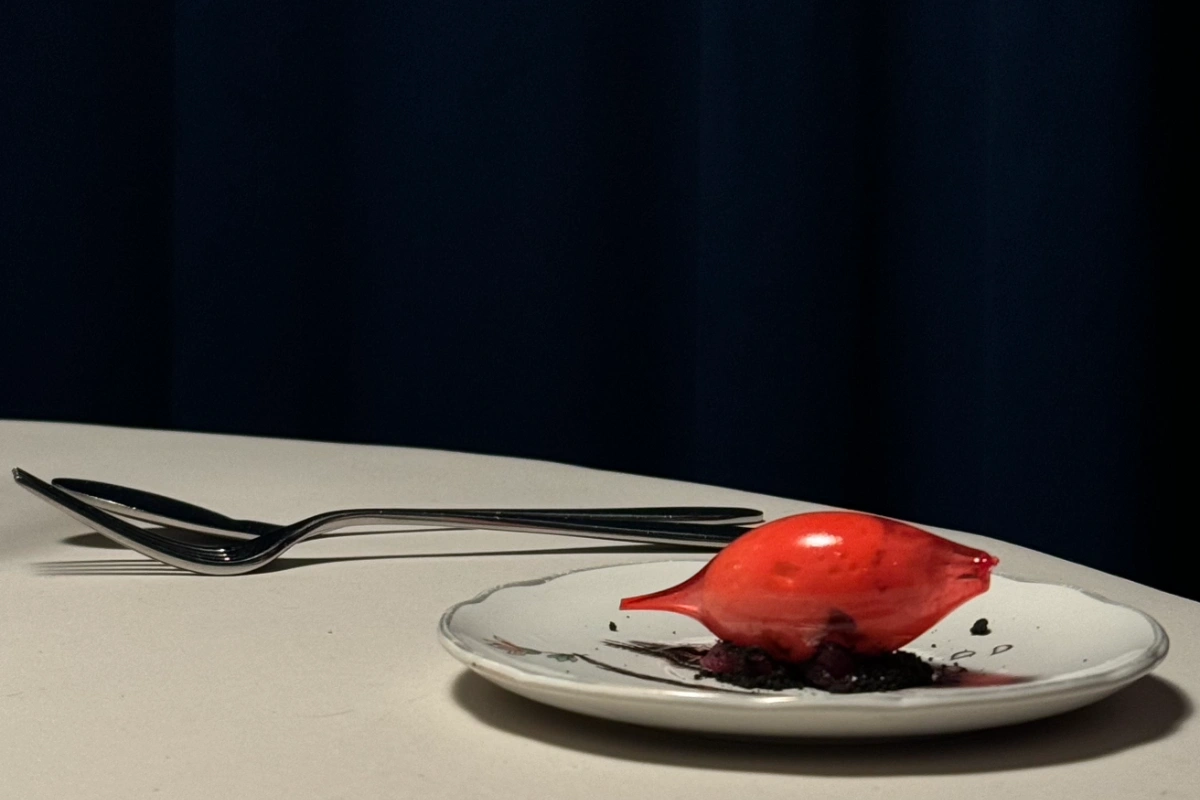
Milan’s essential backdrop for Contraste
Milan, the city Perdomo chose as his adopted home, is the perfect setting for a restaurant like Contraste. A dynamic metropolis where fashion, design, and culinary innovation thrive in constant dialogue, Milan proved fertile ground for experimentation. The southern district near the Naviglio Pavese has been undergoing urban renewal for years, attracting new establishments and a lively crowd of students, designers, and professionals, and evolving into a buzzing creative hub. Contraste, however, has chosen to remain discreet—hidden away in a secluded courtyard that filters out the city’s bustle, offering a focused, sheltered experience.
That very interplay between “hiding” and “revealing” is part of Contraste’s DNA. An unassuming gate on the street leads to a parallel universe, where the 19th-century heritage—complete with restored frescoes and stuccoes—coexists with bold spatial solutions and a restaurant concept ready to surprise at every turn. This approach reflects Contraste’s desire to showcase a different side of Milan—not merely a capital of finance and fashion, but also a place of dreams, encounters, and cross-cultural inspiration.
Matteo Mammoli
